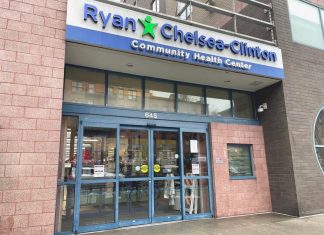Depression rates among young adults have doubled since 2017, with nearly 27% of those under 30 now reporting current symptoms. This surge in mental health struggles fundamentally alters how millions approach dating. Forming romantic connections while battling depression isn’t simply harder; it is different. Standard dating rules bend or break. Communication falters. Energy fluctuates. What most people take for granted requires careful planning, brutal honesty, and realistic expectations.
The Rising Tide of Depression and its Impact on Relationships
The numbers don’t lie. As of 2025, over 18% of U.S. adults struggle with depression, the highest rate recorded in a decade. Young adults aged 18–25 are particularly vulnerable, with nearly 19% experiencing major depressive episodes. Women face disproportionately high rates, with 26.5% reporting depressive symptoms in the past two weeks. These statistics aren’t just abstract; they shape who enters the dating pool, their resources, and their capacity for emotional connection.
Income exacerbates the problem. Americans earning under $24,000 annually saw depression rates climb from 22% in 2017 to over 35% in 2025. This means financial instability doesn’t just add stress; it directly fuels the mental health crisis that impacts dating.
When Needs Collide: Adapting Relationship Structures
People experiencing depression often prioritize practical needs over traditional romance. Some gravitate toward casual arrangements that demand less emotional energy. Others seek structured relationships with clear boundaries, sometimes through unconventional means like age-gap partnerships where stability is paramount. Depression reshapes how people date, not just who they date.
This manifests in communication patterns and emotional availability. Those managing depressive episodes might prefer partners who require less frequent contact or who maintain independent lives. This explains the rise of long-distance arrangements, open relationships with multiple support sources, or connections where expectations are explicitly defined from the start. Flexibility becomes the key to survival.
The Breakdown: Communication, Dating Apps, and Access to Care
Nearly 90% of people with depression report difficulties in work, home, or social settings. This translates directly to romantic relationships. Conversations stall. Texts go unread. Phone calls become burdens. The depressed partner might withdraw entirely, leaving their partner confused and hurt.
Dating apps only compound the problem. Algorithms prioritize superficial traits, triggering self-image issues and social comparison. Rejection is quantified in unmatched profiles and ignored messages. Some platforms offer mental health resources, but systemic change lags.
Access to care remains uneven. Only 40% of people with depression receive therapy, despite its proven benefits. Women seek counseling at higher rates (43% vs. 33% for men). Age, gender, and socioeconomic status create additional barriers. Telehealth expands access, but digital fatigue and affordability remain issues.
The Impact of Partnership: Support, Isolation, and Alternatives
Single and unpartnered people report higher loneliness and depression risks. However, partnership alone isn’t a cure. A supportive partner provides scaffolding during depressive episodes. An unsupportive partner worsens symptoms through criticism or unrealistic demands.
Polyamorous and non-monogamous arrangements show mixed results. Some studies find lower stress levels due to expanded support networks. Others note increased stigma and social exclusion. Community acceptance and communication skills matter more than relationship structure.
Strategies That Work: Community, Communication, and Care
Temple University researcher Lisa Ferretti emphasizes community-centered interventions. Group support reduces isolation and improves outcomes. Local peer groups, family therapy, and relationship skill-building programs show measurable benefits.
Therapists recommend prioritizing self-care, including professional help when symptoms interfere with daily function. Open communication with partners about mental health needs prevents misunderstandings. Couples therapy teaches skills for managing depression’s impact on the relationship. Digital resources supplement traditional care, particularly when cost or geography limit access.
Depression will continue affecting millions of daters. The data shows no signs of improvement. Young adults, women, and lower-income populations face particular challenges. Professional support, community interventions, and adapted relationship structures offer paths forward.
The reality is brutal: dating with depression is harder. But it’s not impossible. It just requires more honesty, more self-awareness, and a willingness to redefine what a healthy relationship looks like






























